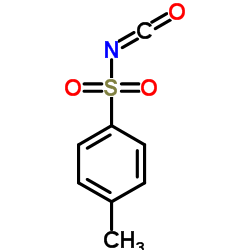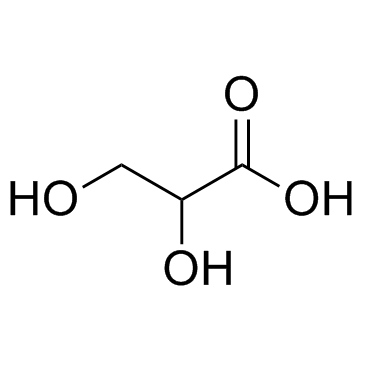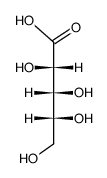127-65-1
| 中文名 | 氯胺T |
|---|---|
| 英文名 | chloramine T |
| 中文别名 |
氯胺T钠
氯胺 T |
| 英文别名 |
Euclorina
Chloramine (T) CHLORAMINE-T-TRIHYDRATE clorosan CHLORAMINE-T, TRIHYDRATE OR - 250 G Tosylchloramide sodium MI 9 N-Chloro-4-toluenesulfonamide,sodium salt NF X Kloramin (VAN) Sodium chloro[(4-methylphenyl)sulfonyl]azanide MFCD00000522 Halamid MeC6H4SO3NNaCl Chloramine-T MIANINE Aktiven N-CHLORO-4-TOLUOLSULFONAMID SODIUM GANSIL sodium N-chloro-p-toluenesulfonamide Sodium chloro(tosyl)amide Benzenesulfonamide, N-chloro-4-methyl-, sodium salt (1:1) Chlorazene CHLORAMINE T TRIHYDRATE Clorina Chloramine T BENZENESULFONAMIDE,N-CHLORO-4-METHYL-, SODIUM SALT (1:1) aktivin anexol EINECS 204-854-7 |
| 密度 | 1.36g/cm3 |
|---|---|
| 沸点 | 314.3ºC at 760mmHg |
| 熔点 | 167-170 °C(lit.) |
| 分子式 | C7H7ClNNaO2S |
| 分子量 | 227.644 |
| 闪点 | 143.9ºC |
| 精确质量 | 226.978378 |
| PSA | 42.52000 |
| LogP | 3.29200 |
| 外观性状 | 白色或黄色粉末带有一种像氯一样的气味 |
| 储存条件 | 库房低温通风干燥; 与酸类分开存放 |
| 稳定性 | 1.在乙醇中分解,受空气和光的作用亦会逐渐分解。有杀菌性能。对金色链霉菌、枯草杆菌、大肠杆菌、绿脓杆菌的抑制浓度为2 0 0 0 μ g·L-1,p H 呈酸性时的抗菌性比p H 呈碱性时大。主要通过对病菌体有效成分、酶蛋白的氧化分解而起抑菌作用。吸收后会使中枢神经机能受到抑制,产生气喘。 |
| 水溶解性 | H2O: >100 mg/mL |
| 更多 | 1. 性状:白色鳞片状固体或白色结晶粉末 2. 溶解性:易溶于水和甘油,不溶于乙醚、氯仿和苯。 |
Synonym:Sodium N-chloro-4-toluene sulfonamide; chloramine-t Section 2 - COMPOSITION, INFORMATION ON INGREDIENTS
Risk Phrases: 36/37/38 42 Section 3 - HAZARDS IDENTIFICATION EMERGENCY OVERVIEW
Appearance: white. Warning! May cause skin irritation. May cause allergic respiratory reaction. Air sensitive. The toxicological properties of this material have not been fully investigated. May cause severe eye irritation and possible injury. May cause severe respiratory and digestive tract irritation with possible burns. Target Organs: None. Potential Health Effects Eye: Causes eye irritation. May result in corneal injury. Skin: Causes skin irritation. Ingestion: May cause severe gastrointestinal tract irritation with nausea, vomiting and possible burns. Inhalation: May cause irritation of the respiratory tract with burning pain in the nose and throat, coughing, wheezing, shortness of breath and pulmonary edema. Chronic: Repeated exposure may cause allergic respiratory reaction (asthma). Section 4 - FIRST AID MEASURES Eyes: Immediately flush eyes with plenty of water for at least 15 minutes, occasionally lifting the upper and lower eyelids. Get medical aid immediately. Skin: Get medical aid. Immediately flush skin with plenty of soap and water for at least 15 minutes while removing contaminated clothing and shoes. Ingestion: If victim is conscious and alert, give 2-4 cupfuls of milk or water. Never give anything by mouth to an unconscious person. Get medical aid immediately. Inhalation: Get medical aid immediately. Remove from exposure to fresh air immediately. If not breathing, give artificial respiration. If breathing is difficult, give oxygen. Notes to Physician: Treat symptomatically and Section 5 - FIRE FIGHTING MEASURES General Information: As in any fire, wear a self-contained breathing apparatus in pressure-demand, MSHA/NIOSH (approved or equivalent), and full protective gear. During a fire, irritating and highly toxic gases may be generated by thermal decomposition or combustion. Extinguishing Media: In case of fire, use water, dry chemical, chemical foam, or alcohol-resistant foam. Section 6 - ACCIDENTAL RELEASE MEASURES General Information: Use proper personal protective equipment as indicated in Section 8. Spills/Leaks: Clean up spills immediately, observing precautions in the Protective Equipment section. Sweep up, then place into a suitable container for disposal. Section 7 - HANDLING and STORAGE Handling: Wash thoroughly after handling. Wash hands before eating. Remove contaminated clothing and wash before reuse. Use only in a well ventilated area. Do not get on skin or in eyes. Avoid ingestion and inhalation. Storage: Store in a cool, dry place. Keep container closed when not in use. Section 8 - EXPOSURE CONTROLS, PERSONAL PROTECTION Engineering Controls: Use adequate general or local exhaust ventilation to keep airborne concentrations below the permissible exposure limits. Exposure Limits +--------------------+-------------------+-------------------+-----------------+ | Chemical Name | ACGIH | NIOSH |OSHA - Final PELs| |--------------------|-------------------|-------------------|-----------------| | Chloramine-t |none listed |none listed |none listed | +--------------------+-------------------+-------------------+-----------------+ OSHA Vacated PELs: Chloramine-t: No OSHA Vacated PELs are listed for this chemical. Personal Protective Equipment Eyes: Wear appropriate protective eyeglasses or chemical safety goggles as described by OSHA's eye and face protection regulations in 29 CFR 1910.133 or European Standard EN166. Skin: Wear appropriate protective gloves to prevent skin exposure. Clothing: Wear appropriate protective clothing to prevent skin exposure. Respirators: Follow the OSHA respirator regulations found in 29CFR 1910.134 or European Standard EN 149. Always use a NIOSH or European Standard EN 149 approved respirator when necessary. Section 9 - PHYSICAL AND CHEMICAL PROPERTIES Physical State: Solid Appearance: white Odor: None reported. pH: Not available. Vapor Pressure: Not available. Viscosity: Not available. Boiling Point: Not available. Freezing/Melting Point: 167-170 C (decomposes) Autoignition Temperature: Not applicable. Flash Point: Not applicable. NFPA Rating: Not published. Explosion Limits, Lower: Not available. Upper: Not available. Decomposition Temperature: Not available. Solubility: Soluble in water. Specific Gravity/Density: Not available. Molecular Formula: C7H7ClNO2SNa Molecular Weight: 227.5573 Section 10 - STABILITY AND REACTIVITY Chemical Stability: Stable under normal temperatures and pressures. Conditions to Avoid: Incompatible materials, exposure to air, acids. Incompatibilities with Other Materials: Strong oxidizing agents, air, and acids. May decompose violently if heated above 130 C. Explodes when heated to 175 C. Mixtures with calcium carbonate + isonitriles explode when warmed. Hazardous Decomposition Products: Hydrogen chloride, chlorine, nitrogen oxides, carbon monoxide, oxides of sulfur, irritating and toxic fumes and gases, carbon dioxide, toxic fumes of sodium oxide. Hazardous Polymerization: Has not been reported. Section 11 - TOXICOLOGICAL INFORMATION RTECS#: CAS# 127-65-1: XT5616800 LD50/LC50: Not available. Carcinogenicity: Chloramine-t - Not listed by ACGIH, IARC, NIOSH, NTP, or OSHA. See actual entry in RTECS for complete information. Section 12 - ECOLOGICAL INFORMATION Section 13 - DISPOSAL CONSIDERATIONS Chemical waste generators must determine whether a discarded chemical is classif as a hazardous waste. US EPA guidelines for the classification determination are listed in 40 CFR Part Additionally, waste generators must consult state and local hazardous waste regu ensure complete and accurate classification. RCRA P-Series: None listed. RCRA U-Series: None listed. Section 14 - TRANSPORT INFORMATION CDG/CPL Not classified as hazardous for supply. Canadian TDG No information available. Section 15 - REGULATORY INFORMATION European/International Regulations European Labeling in Accordance with EC Directives Hazard Symbols: XN Risk Phrases: R 36/37/38 Irritating to eyes, respiratory system and skin. R 42 May cause sensitization by inhalation. Safety Phrases: S 2 Keep out of reach of children. S 7 Keep container tightly closed. S 15 Keep away from heat. S 22 Do not breathe dust. S 36/37/39 Wear suitable protective clothing, gloves and eye/face protection. WGK (Water Danger/Protection) CAS# 127-65-1: 2 United Kingdom Occupational Exposure Limits Canada CAS# 127-65-1 is listed on Canada's DSL/NDSL List. WHMIS: Not available. CAS# 127-65-1 is not listed on Canada's Ingredient Disclosure List. Exposure Limits US FEDERAL TSCA CAS# 127-65-1 is listed on the TSCA inventory. Health & Safety Reporting List None of the chemicals are on the Health & Safety Reporting List. Chemical Test Rules None of the chemicals in this product are under a Chemical Test Rule. Section 12b None of the chemicals are listed under TSCA Section 12b. TSCA Significant New Use Rule None of the chemicals in this material have a SNUR under TSCA. SARA Section 302 (RQ) None of the chemicals in this material have an RQ. Section 302 (TPQ) None of the chemicals in this product have a TPQ. SARA Codes CAS # 127-65-1: acute, reactive. Section 313 No chemicals are reportable under Section 313. Clean Air Act: This material does not contain any hazardous air pollutants. This material does not contain any Class 1 Ozone depletors. SECTION 16 - ADDITIONAL INFORMATION N/A |
|
毒理学数据: 非肠-小鼠 LCL0: 300 毫克/公斤 CHEMICAL IDENTIFICATION
HEALTH HAZARD DATAACUTE TOXICITY DATA
MUTATION DATA
|
| 危害码 (欧洲) | C:Corrosive |
|---|---|
| 风险声明 (欧洲) | R22;R31;R34;R42 |
| 安全声明 (欧洲) | S22-S26-S36/37/39-S45-S7-S1/2 |
| 危险品运输编码 | UN 3263 8/PG 3 |
| WGK德国 | 2 |
| 海关编码 | 2935009090 |
|
~93% 
127-65-1 |
| 文献:Shiri, Azam; Khoramabadi-Zad, Ahmad Synthesis, 2009 , # 16 p. 2797 - 2801 |
|
~% 
127-65-1 |
| 文献:International Journal of Chemical Kinetics, , vol. 27, # 7 p. 663 - 674 |
| 上游产品 2 | |
|---|---|
| 下游产品 8 | |
| 海关编码 | 2924299090 |
|---|---|
| 中文概述 | 2924299090. 其他环酰胺(包括环氨基甲酸酯)(包括其衍生物以及他们的盐). 增值税率:17.0%. 退税率:13.0%. 监管条件:无. 最惠国关税:6.5%. 普通关税:30.0% |
| 申报要素 | 品名, 成分含量, 用途, 包装 |
| Summary | 2924299090. other cyclic amides (including cyclic carbamates) and their derivatives; salts thereof. VAT:17.0%. Tax rebate rate:13.0%. . MFN tariff:6.5%. General tariff:30.0% |



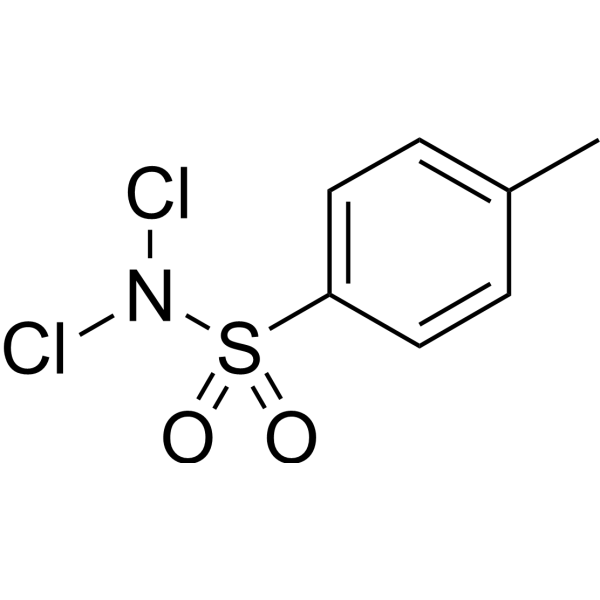
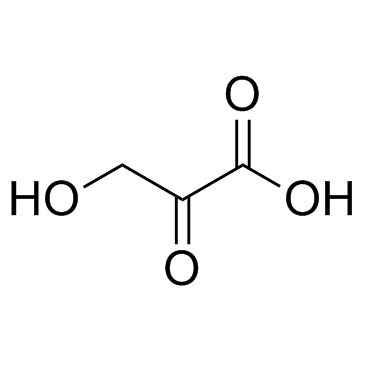
![N-[diethylamino(phenyl)-λ4-sulfanylidene]-4-methylbenzenesulfonamide结构式](https://image.chemsrc.com/caspic/202/109814-59-7.png)
